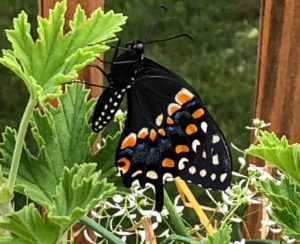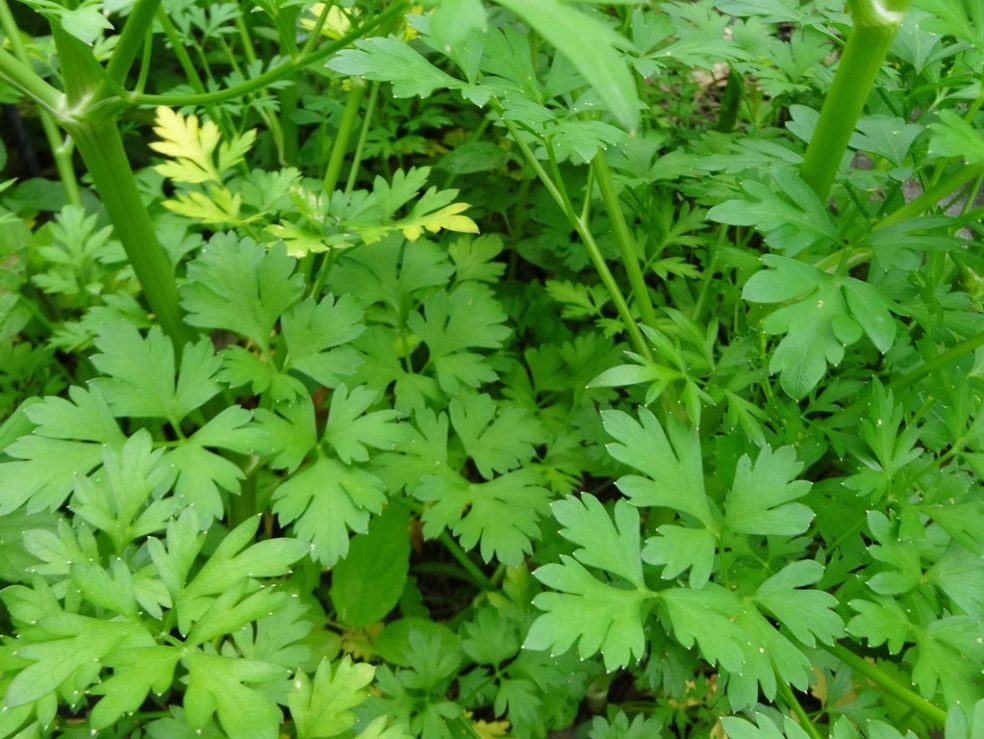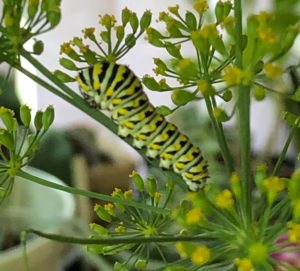2021 Herb of the Year - Parsley (Petroselinum sp.)
(by Shirley Mah Kooyman)
Every year since 1995 the IHA (International Herb Association, a professional trade association) has highlighted an “Herb of the Year”. Throughout the year that particular herb is promoted to help educate the public of its many virtues in culinary, medicinal, and ornamental uses. The first herb selected was Fennel in 1995. Since then many other herbs have been chosen. For 2021, the “Herb of the Year” is parsley.
Parsley is grown all over the world for food as an herb and a vegetable. Its native habitat is in Mediterranean areas in such countries as: Italy, Spain, Greece, Turkey, Sardinia, Morocco, Tunisia, Lebanon, Israel, et al. It is, then, not surprising that parsley is prevalent in many of the native dishes from those countries. The derivation of the English common name “Parsley” is from petersilie (Old English) and peresil (Old French). Both words were initially derived from petroselinum (Latin), which is also the current generic name for parsley. It’s interesting to note the similarity in the words for “parsley” in various modern languages: Swedish & Finnish (persilja), Norwegian & Danish (persille), Spanish (perejil), French (persil), German (petersilie), and Dutch (peterselie).
Parsley (Petroselinum sp.) is in the carrot family (Apiaceae or Umbelliferae). In the Tropics it is an annual, but in the Temperate Zone it is a biennial, which means it takes 2 years for the plant to complete its life cycle. The first year is spent growing vegetatively with its concentration on producing foliage. In its second year it flowers and then dies.
Parsley is categorized into 3 types: Curled group, Plain Leaf group, and Root group.
1.) The Curled group is the curly-leaf parsley (Petroselinum crispum var. crispum). This is what you usually see as a garnish on your plate at a restaurant. It holds its shape well and stays bright green.
2.) The Plain Leaf group is the flat-leaf parsley or Italian parsley (Petroselinum crispum var. neapolitanum).
3.) The Root group is the Hamburg parsley or root parsley (Petroselinum crispum var. tuberosum ‘Hamburg’ or Petroselinum crispum var. tuberosum ‘Hamburg Arat’) which is grown for both its edible leaves and thick parsnip-like root.
The root parsley is thought to have been cultivated in Sardinia and later brought to England in the mid-1500s. It is easy to confuse some herbs that have parsley as part of their common name but are not in the parsley genus (Petroselinum). For instance, there is Japanese Mitsuba parsley (Cryptotaenia japonica), French parsley is really chervil (Anthriscus cerefolium), and Chinese parsley is really cilantro (Coriandrum sativum). The leafy part is cilantro but the seeds are coriander. A different common name is applied to a different part of the plant used. Nutritionally, leaf parsley is a good source of Vitamins A (for eye health), C (strengthen immune system), and K (for bone & heart health). Root parsley is rich in iron. Chewing and eating fresh leaf parsley will help as a breath freshener.

The French Bouquet Garni is an herbal combination with parsley as one of the herbs. Italian Gremolata is a green sauce made of chopped parsley with lemon zest, and garlic. It’s a perfect herbal condiment for pasta, vegetables, fish, and meat dishes. Finally, there is Chimichurri, an Argentinean sauce made of parsley, oregano, garlic, olive oil, vinegar, and red pepper. It is used as a marinade and side condiment for grilled steak.
Aside from people using parsley as a food source, the herb is also a host plant for butterflies, especially Eastern Black Swallowtail butterflies. Their caterpillars sometimes referred to as “parsley worms”, can devour parsley in no time. Once the mature caterpillars enter into the chrysalis stage they stay put for about 2 weeks before emerging as gorgeous butterflies. Be sure to plant extra parsley to share with the “parsley worms”.
Parsley is an easy herb to grow. They thrive in locations with full sun or half-day sun (preferably afternoon sun) and well-drained soil. A side dressing of compost is generally sufficient as a fertilizer, although an occasional douse of liquid fertilizer wouldn’t hurt. You can buy parsley seedlings or grow them from seeds. Growing parsley from seeds is easy once you know that the seeds have an inhibitor on its seed coat to prevent quick germination. Be sure to soak the seeds for 48 hours before planting or the seeds may not germinate.


